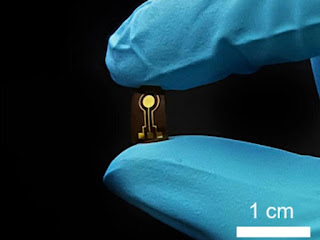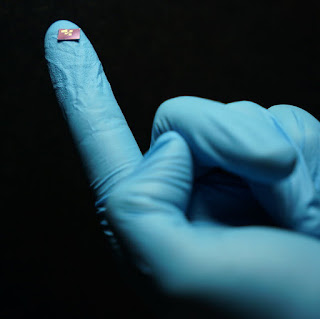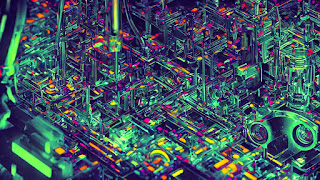Fermented foods and fiber may lower stress levels, says new study
Oct 2022, phys.org
"psychobiotic" diet - prebiotic and fermented foods
via APC Microbiome in Cork, Ireland: Kirsten Berding et al, Feed your microbes to deal with stress: a psychobiotic diet impacts microbial stability and perceived stress in a healthy adult population, Molecular Psychiatry (2022). DOI: 10.1038/s41380-022-01817-y
Jet lagged plants pave the way to first digital plant
Nov 2022, phys.org
Not just "digital plants" but also "clock-mutant plants" - they mutated the clock genes of a plant, then tehy developed a computational model of these clock mutants using clock gene activity, metabolic and physiological models (in silico, digital twins, etc.)
via University of Edinburgh: Andrew Millar et al, The Arabidopsis Framework Model version 2 predicts the organism-level effects of circadian clock gene mis-regulation, in silico Plants (2022). DOI: 10.1093/insilicoplants/diac010
Quantum dots form ordered material
Nov 2022, phys.org
"Self organizing optoelectronic metamaterial" - a three-dimensional superlattice where quantum dots act like atoms in a crystal
via University of Groningen: Jacopo Pinna et al, Approaching Bulk Mobility in PbSe Colloidal Quantum dots 3D Superlattices, Advanced Materials (2022). DOI: 10.1002/adma.202207364
Researchers unlock light-matter interactions on sub-nanometer scales, leading to 'picophotonics'
Nov 2022, phys.org
"Picophotonics" - picometer-scale electromagnetic waves
via Purdue University: Sathwik Bharadwaj et al, Picophotonics: Anomalous Atomistic Waves in Silicon, Physical Review Applied (2022). DOI: 10.1103/PhysRevApplied.18.044065
 |
| AI Art - Golden Child - 2022 |
The unimon, a new qubit to boost quantum computers for useful applications
Nov 2022, phys.org
"Unimon" - a superconducting qubit that unites in a single circuit the desired properties of increased anharmonicity, full insensitivity to dc charge noise, reduced sensitivity to magnetic noise, and a simple structure consisting only of a single Josephson junction in a resonator to make high-fidelity qubit gates
Bonus - we are currently living in the "noisy intermediate-scale quantum (NISQ) era"
via Aalto University, IQM Quantum Computers, and VTT Technical Research Center: Eric Hyyppä et al, Unimon qubit, Nature Communications (2022). DOI: 10.1038/s41467-022-34614-w
Earth now weighs six ronnagrams: New metric prefixes voted in
Nov 2022, phys.org
- Earth weighs six ronnagrams; a six followed by 27 zeroes.
- Jupiter, that's two quettagrams; a two followed by 30 zeros.
- Hellabytes and Brontobytes were not official, because the abbreviation of H and B were already taken.
- The only letters that were not used for other units or other symbols were R and Q, hence Ronna and Quetta.
via the 27th General Conference on Weights and Measures.
Fluxonium qubits bring the creation of a quantum computer closer
Nov 2022, phys.org
Quantum words - Fluxonium quibit - operates at a low frequency of about 600 MHz, giving it a longer life cycle and a greater precision of operations, so they are used to make longer algorithms
via Russian National University of Science and Technology: Ilya N. Moskalenko et al, High fidelity two-qubit gates on fluxoniums using a tunable coupler, npj Quantum Information (2022). DOI: 10.1038/s41534-022-00644-x






























